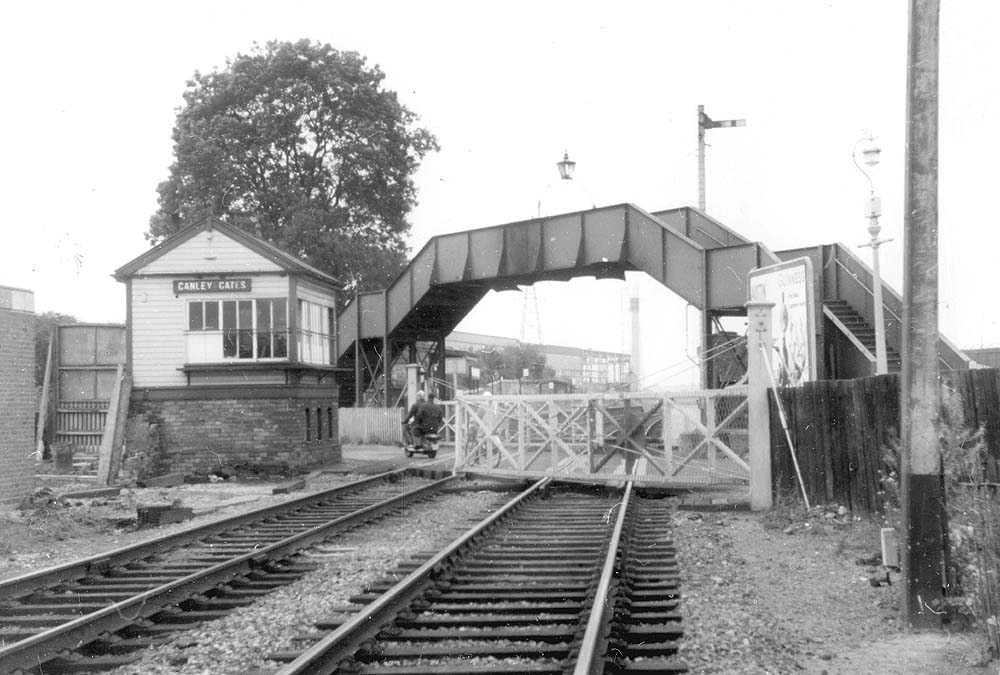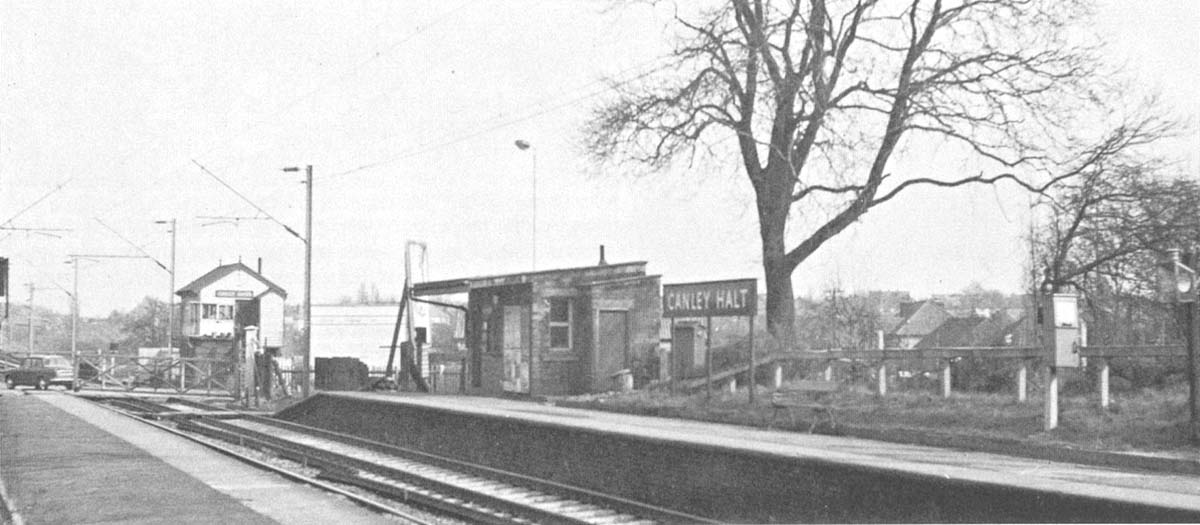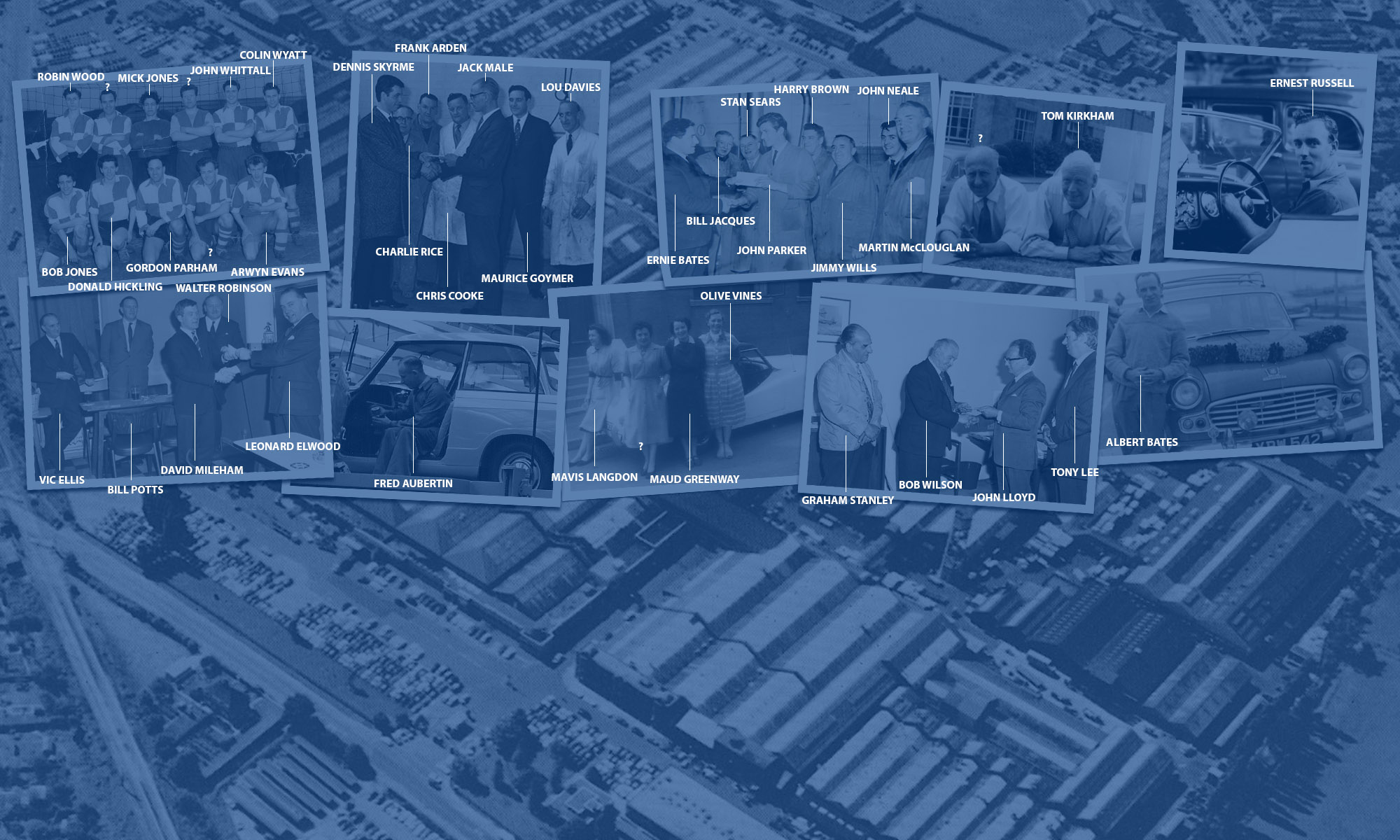Canley Halt was opened for passengers on 30th September 1940, primarily to serve the nearby Standard Motor Company’s Works. The crossing had previously been known as Canley Gates from its inception when the London & Birmingham Railway first provided a gate keeper’s house in 1838 to man the gates.

The crossing was originally created to protect Canley Lane, later renamed Canley Road and was located by rail between Coventry station and Tile Hill station and by road between Hearsall Common and Fletchamstead Highway. The Halt was very much a product of the time looking very austere being built to a utilitarian design and constructed from brick and concrete. Although officially named Canley Halt the prior existence of Canley Gates signal cabin led occasionally to some confusion with both LMS and BR sources referring to Canley Gates (Halt). The station has never handled any general goods traffic because of Coventry station, with its extensive facilities, being little more than a mile away.
The existence of several factories nearby had over the years led to numerous proposals for private sidings and one such scheme is shown below. The density of road traffic combined together with the frequency of of passing trains had led to a number of proposals to erect bridges, footbridges, etc none coming to fruition until the start of the 21st century. In the 1930s it was proposed by the LMS to quadruple the line between Coventry and Birmingham (similar to the GWR’s initiative to quadruple part of the route between Leamington and Moor Street).
Whilst land was purchased for this initiative (and work started at Coventry station too) the start of the Second World War in September 1939 prevented this proposal from becoming a reality. As part of this initiative a substantial passenger station with goods facilities was to be built adjacent to Fletchampstead Highway utilising some 8½ acres of land. The LMS even constructed an access road some 50 feet wide to serve ‘Fletchampstead Station’ located at the foot of the embankment of the soon to be constructed Coventry By-Pass better known as Fletchamstead Highway. It was further recorded that 3 acres of land were purchased by the Corporation at £150 per acre for a shunting neck, formerly belonging to Lord Leigh.
 The Standard Motor Company’s works had been built as part of the UK’s strategic defence manufacturing capability. The Standard Motor Company was later to become the home of the Standard Vanguard and Triumph Sports Cars. Ultimately the works became part of British Leyland Motor Company which morphed into British Leyland followed by being part of the Jaguar Rover Triumph division and ultimately closure.
The Standard Motor Company’s works had been built as part of the UK’s strategic defence manufacturing capability. The Standard Motor Company was later to become the home of the Standard Vanguard and Triumph Sports Cars. Ultimately the works became part of British Leyland Motor Company which morphed into British Leyland followed by being part of the Jaguar Rover Triumph division and ultimately closure.
The car factory, as well as other nearby works, would generate considerable number of pedestrians at closing times which were the bane of the signalman’s life as they often took considerable risk of crossing the lines without looking or in front of a train. The steel footbridge was removed for both rail passengers and pedestrians as part of the electrification of the Coventry to Birmingham line. Pedestrians using the level crossing were then forced to wait at the barrier when trains were passing. The railway traffic included both stopping trains serving which also serviced Canley Halt as well as regular the Inter-City trains.
These trains necessitated the closure of the crossing to road traffic some 135 times a day, regularly causing extensive queues and diverting traffic to other routes. The closing of the barrier equated to a total barrier down time of 30 minutes in the evening peak hour between 4:00 pm and 5:00 pm. Today the station remains open although extensively rebuilt but it is no longer a crossing as the frequency of rail service resulted in the gates being closed for too longer a period. Road traffic proceeding to the City centre now uses a route via Fletchamstead Highway.
Photographer John Hyde – Steam Archive

